The winch solenoid is an electronic device that activates the winch motor on a vehicle-mounted winch. An electromagnetic switch is engaged when the activation button is pressed, and current from the battery is delivered to the solenoid. When the solenoid is activated, a current is sent to the winch motor, which then begins to turn the winch drum.
The standard winch uses separate solenoids for forward and reverse, with the strongest winches having four solenoids. The winch solenoid is made to resist the high electricity draw required to crank the winch. It is also designed to give the required current without harming the winch switch or the winch motor.
A solenoid is required on a winch to protect the winch engine. However, replacing a solenoid is far less expensive when compared to replacing a motor. Therefore, even though the winch motor can operate without a solenoid, it should be approached with caution.
Solenoids are important car parts because they allow your ignition system to reach the starter motor and, as a result, cause your car to turn on. Turning your key would not start your car if it didn't have a solenoid. You could, however, start your vehicle by interfacing directly with the battery and starter motor.
However, starting your car this way would necessitate popping the hood each time you went for a drive. Depending on the complexity of your car's engine bay, this technique may be impossible. As a result, it's critical to ensure that your solenoid is operational at all times. It is a must-have component if you wish to experience the ease of key-turning engine ignition.
Rank | Product Image | Product Name | Buy on Amazon |
|---|---|---|---|
1. | KanSmart Winch Solenoid | Check Price | |
2. | Orcish Winch Solenoid Relay |
Check Price | |
3. | Warn 62871 Powersports ATV Winch Solenoid | Check Price | |
4. |
12V 500 AMP Universal Winch Solenoid Relay Contactor | Check Price | |
5. | Bigtur 500A 12V Winch Relay Solenoid Replacement Contactor | Check Price |
KanSmart Winch Solenoid Relay Contactor 12V 250A Thumb Truck for ATV UTV Boat 4x4 Vehicles...
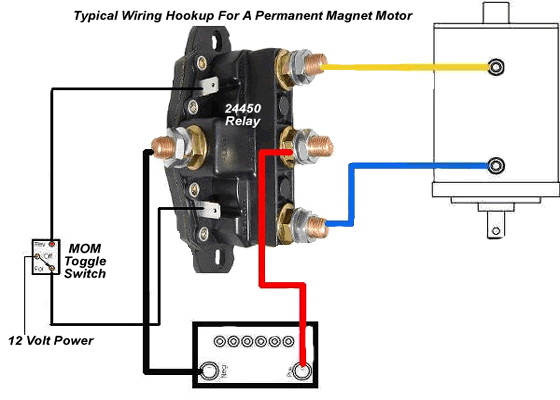 ..
..Winch solenoid relay compatible with Warn winch reference part number - 63070, 62135, 74900, 2875714, 70715. 12V 250A ATV UTV winch solenoid relay replacement parts for Polaris, Honda, kfi, warn, Ramsey, superwinch, mile marker, master lock, cycle country, champion, smittybilt and other models.
It is made of solid, weather-resistant steel with a powder-coated black finish for long-lasting durability. The 12V winch solenoid relay modifies the winch's power direction based on the winch switch's input. It allows the ATV and UTV's electrical systems to be better protected and power distribution switched.
Image Credits: KanSmart
Polaris ranger 800 winch solenoid comes with a step-by-step installation guide, making it the best option for replacing a broken contactor. The two wires (Green and Black) are connected to the switch on a winch that controls in and out. The battery is connected to the black and red wires, while the motor is connected to the blue and yellow wires.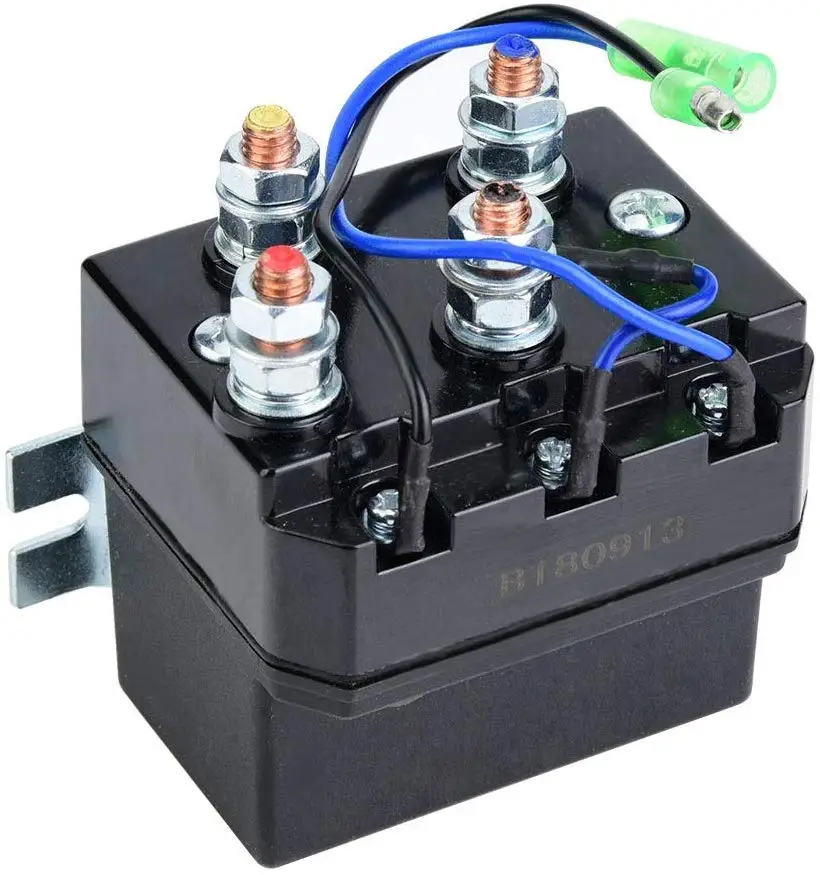
Check Price on Amazon
ORCISH Winch Solenoid Relay 12V 500A for 8000-15000lb ATV UTV Truck Winch Replacement.
The ORCISH electric contactor replacement is compatible with 12v winches rated 8000 to 17000 pounds.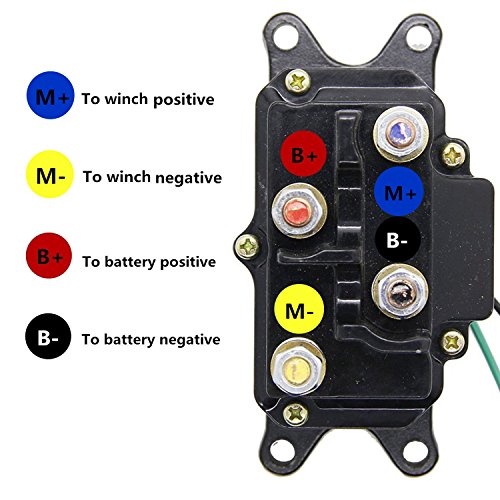 It is a series wound and permanent magnet, and it works with a variety of brands of winches. ORCISH 12V Winch Solenoid is sealed and corrosion-proof. The construction is strong, durable and compatible with a wireless remote.
It is a series wound and permanent magnet, and it works with a variety of brands of winches. ORCISH 12V Winch Solenoid is sealed and corrosion-proof. The construction is strong, durable and compatible with a wireless remote.
Image Credits: ORCISH
Check Price on Amazon
Sale
WARN 62871 Powersports ATV Winch Solenoid for A2000 Winches
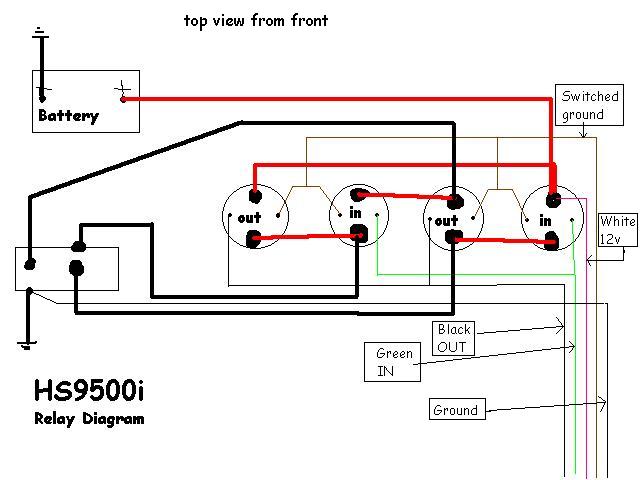 ..
..Since 1948, Warn Industries has earned a reputation for producing the highest-quality winches, bumpers, and accessories. They are designed, constructed, and tested for dependability and durability. Warn winches are built to assist you in completing your tasks securely, rapidly, and efficiently. It is the place to start if you're creating a truck or SUV.
Image Credits: Warn
The Warn 62871 ATV Winch Solenoid is designed for the Warn A2000 ATV winch system. It takes the place of the former Warn number 36448. The power-interrupt solenoid prevents the winch from being utilized unless the ignition is turned on, a safety and advanced functionality feature.

Check Price on Amazon
Sale
12V 500 AMP Unversal Winch Solenoid Relay Contactor For HEAVY DUTY UPGRADE ALBRIGHT EQUIV
Upgrade from the 'Twin Can' Solenoids found on many budget models to the latest WINCHMAX heavy-duty type with larger contact faces and faster contact closure. It also improves safety and reliability. It comes with heavy-duty M8 primary connection posts and a pre-fitted mounting bracket for easy installation into your control box. It is also compatible with the wireless remote system.
It also improves safety and reliability. It comes with heavy-duty M8 primary connection posts and a pre-fitted mounting bracket for easy installation into your control box. It is also compatible with the wireless remote system.
Image Credits: Benefast
Check Price on Amazon
BIGTUR 500A 12V Winch Relay Solenoid Replacement Contactor for 8000-15000lb ATV UTV Truck 4WD 4x4.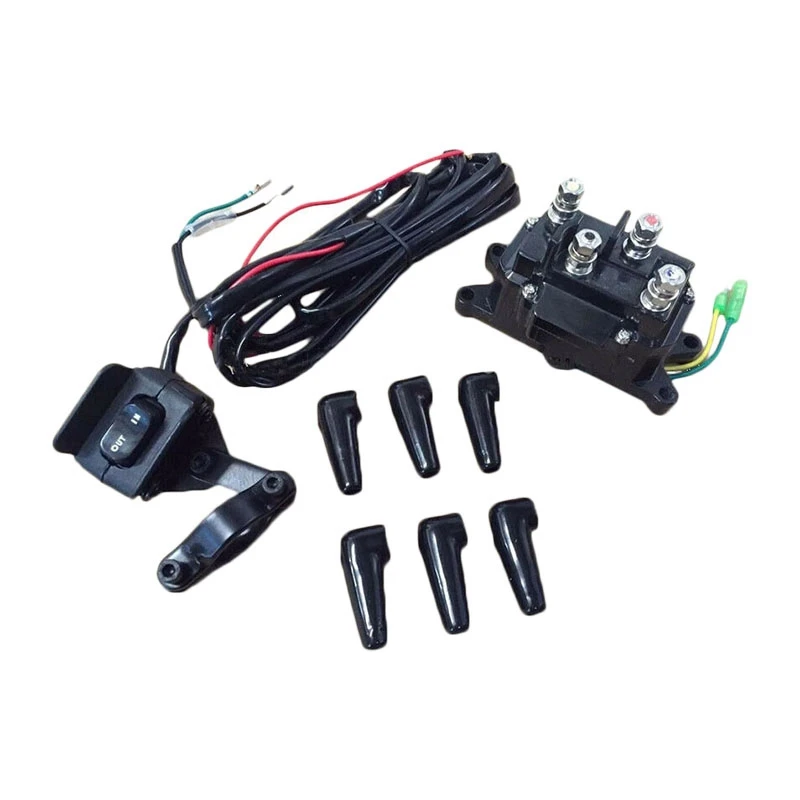 ..
..
It has a heavy-duty construction, black powder coat, shockproof, corrosion-resistant, sealed, and long-lasting. Compatible with remote control systems that use wireless technology. Works with most brands of 12v 8000lbs-15000lbs winches and is suited for 4WD vehicles, ATVs, UTVs, SUVs, and other similar vehicles. The mounting bracket is pre-cut for quick insertion into the control box.

Check Price on Amazon
It is time to replace the solenoid after you've investigated the problem and concluded that it's malfunctioning. Keep in mind that your vendor may request the core, so keep the broken solenoid once it's been removed. Place the new solenoid next to the old one to compare sizes and shapes once you've received it. They should be the same.
A voltmeter is required to test the solenoid's electrical system.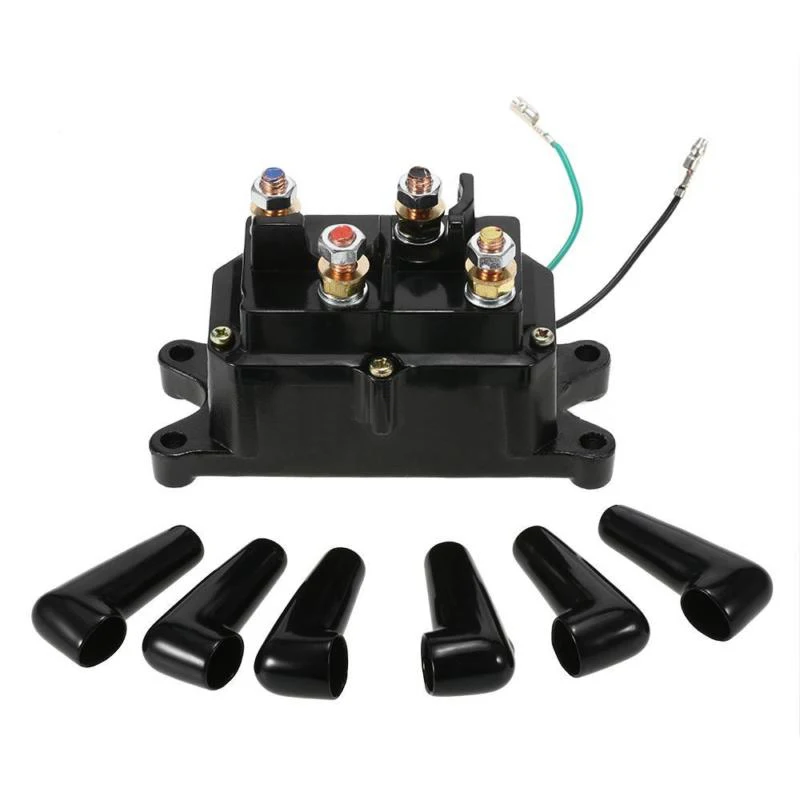 First, check for battery voltage at the solenoid's red "+ Battery" big-wire connector. Even if the vehicle is turned off, it should display battery voltage. Next, check for voltage at the other big-wire connections on the solenoid with everything turned off. All of them should be zero.
First, check for battery voltage at the solenoid's red "+ Battery" big-wire connector. Even if the vehicle is turned off, it should display battery voltage. Next, check for voltage at the other big-wire connections on the solenoid with everything turned off. All of them should be zero.
Select a direction for the winch to spin in. Then, check for voltage at the big-wire terminal that should match that direction when spinning it. The battery voltage is revealed when the solenoid is engaged for that spin direction.
Something is amiss with the solenoid if you press the button to engage the spin, but it doesn't spin, and there's no audible click sound. Instead, when solenoids are working properly, they make a loud clicking noise.
Before getting started, it's a good idea to have a basic understanding of DC wiring. You should be able to go around the solenoid with ease if you understand how the electrical system works and a few standard tools.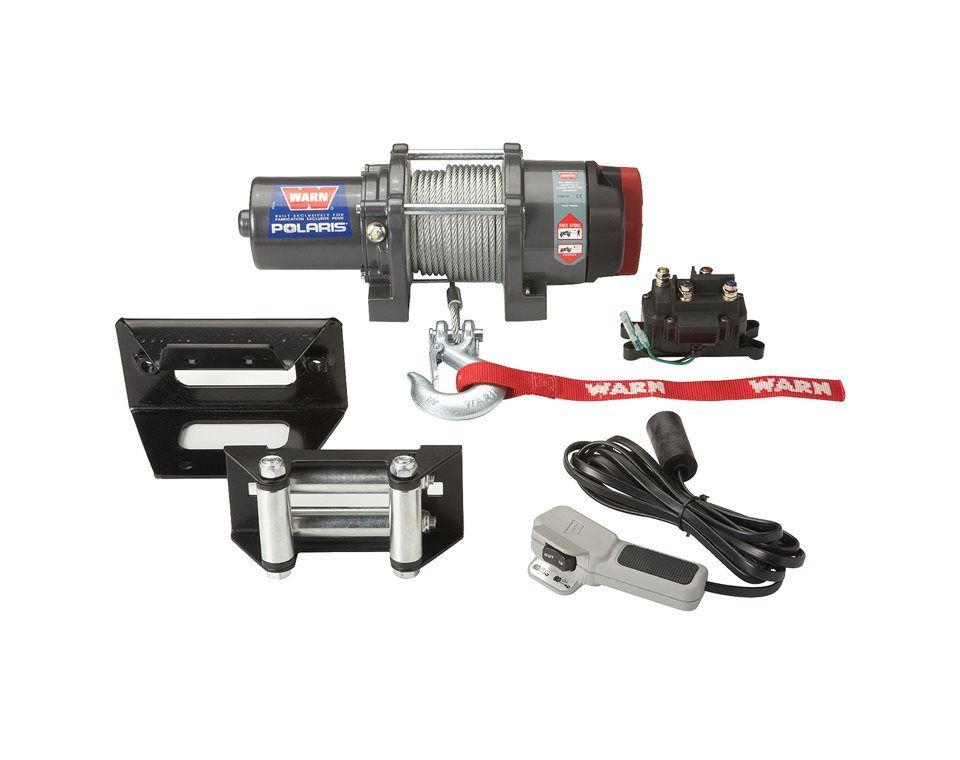
A high-current switch is a solenoid. When you connect a small-wire signal to the small-wire terminal on the solenoid with battery voltage (typically 12 Volts), it completes a circuit that energizes the electromagnetic coil within.
In a short-travel, in-out plunger motion, this electrified coil pulls a piece of metal against a spring. The big-wire circuit is completed when the piece of metal is brought into place. When the big-wire circuit is completed, current flows from the battery to the solenoid metal component, then down the big wire to the winch motor terminal.
Keep in mind that the solenoid's metal portion must be thick enough to carry current in the same way as the large wires do. Multiple solenoids are used in some winches to regulate each direction separately. Circumstances that require you to bypass the solenoid within the winch electrical system:
 If necessary, remove the dust cover to allow access to the wiring terminals.
If necessary, remove the dust cover to allow access to the wiring terminals.Solenoids are crucial components for optimal vehicle operation. They are durable, but they can still fail under specific conditions. For example, when you turn the key in the ignition, a faulty solenoid prevents your engine from starting.
It's critical to understand how solenoids fail so you can spot any problems and repair them as soon as possible.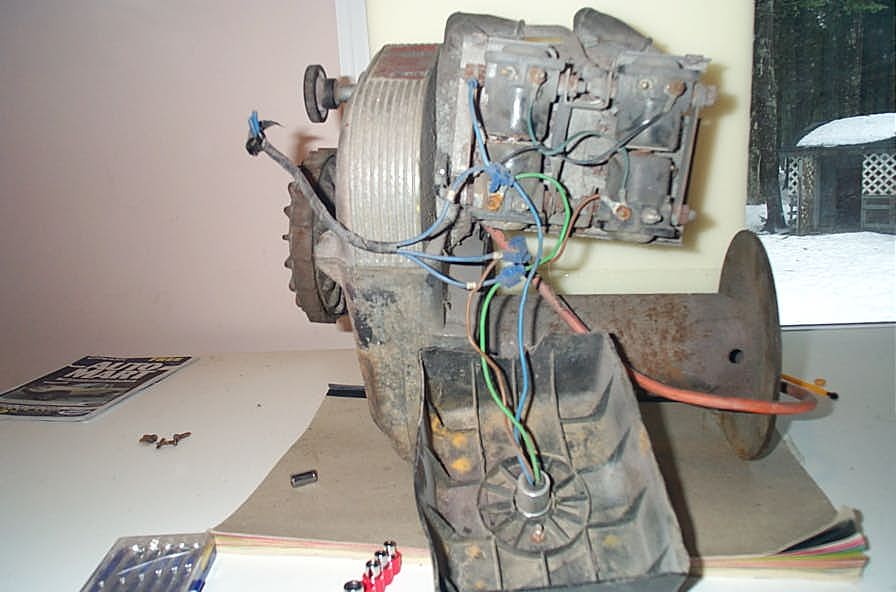 When solenoids don't get enough juice from the battery, they usually stop working.
When solenoids don't get enough juice from the battery, they usually stop working.
In this instance, the solenoid will not give the necessary electrical current to the starter motor. A quick clicking sound indicates a low power issue when turning your ignition key. This loss of power can be caused by a variety of factors, including:
The location of a solenoid varies depending on the make and model of your vehicle. The solenoids on most cars are installed directly on the starter motors and are coupled to other "starter" components such as the starter gear and the starter control terminal.
So, what is a starter motor? It's simply a magnetic and electric motor attached to your car's battery that receives low current power. It turns the starter gear, which then turns to start your entire engine.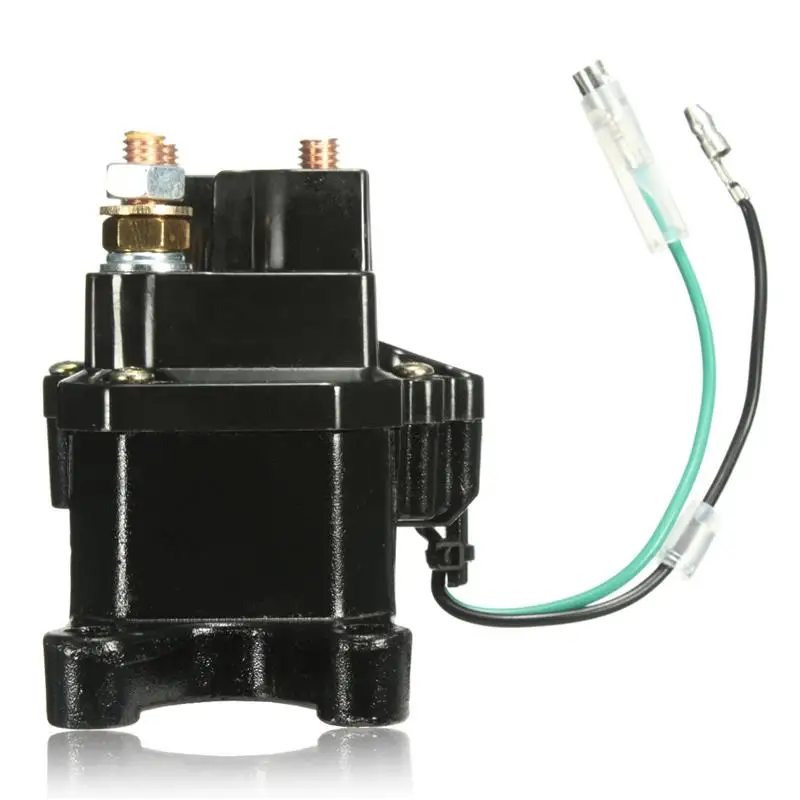
However, the solenoids on a few autos are located elsewhere in the engine compartment. Regardless, the solenoid is always found between the ignition and the engine, so consult your owner's manual for further information on your specific make and model's solenoid position.
Why aren't solenoids interchangeable? The continuous duty solenoid isn't designed to handle the amount of power necessary in a vehicle's starting system, and a starter solenoid can't handle the heat of continuous operation. Using the incorrect solenoid could cause it to burn out fast, resulting in more repairs.
Featured Image Credits: winch-it.com
Most winches in the market contain a solenoid. A solenoid is an electromagnetic switch that ensures the winch operates properly by regulating the electric current from the car’s battery. But in some cases, such as when troubleshooting a winch motor or if there is a heating issue, you may need to bypass the solenoid and winch without it.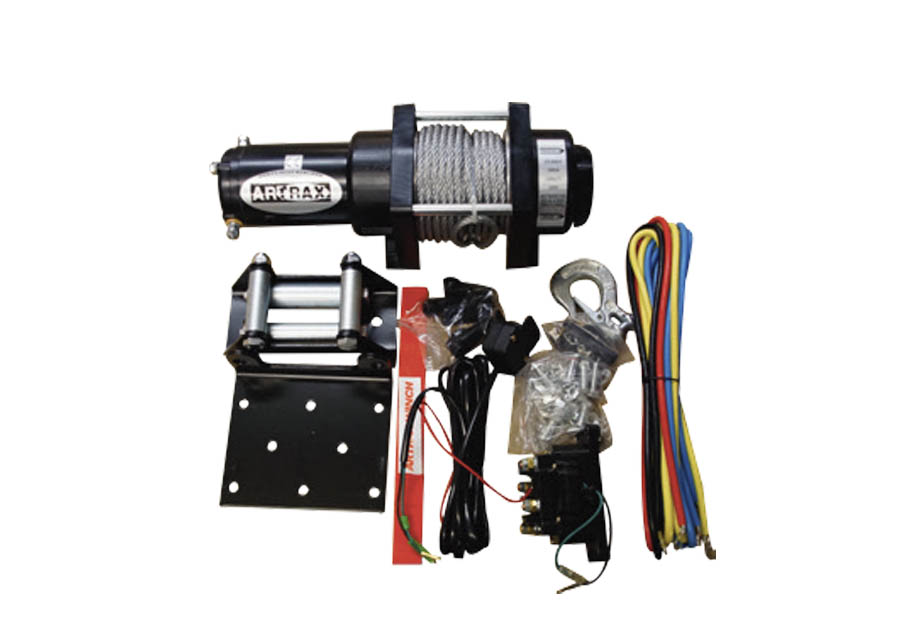
The winch can be wired without a solenoid in five easy steps:
This article explains how you can wire a winch without using a solenoid. Then, you can use your mechanical knowledge to discover if your winch motor has a problem.
Let’s explore the steps in more detail.
Since this problem is related to wiring, the first step is to consult the circuit diagram of the winch solenoid system. This will help you understand the connections of the winch motor, where and how the positive and negative terminals of the battery are connected.
The circuit diagram would vary depending on the type of winch and the manufacturer of the winch. But most likely it will be similar to the one, shown in figure 1.
You may look at the user manual of your winch for more precise pictorial representation. Near the motor, you will find three labels, A, F1, and F2. These connections are important in the next steps.
After you have analyzed the circuit, the next step is to set the winch to free spool mode. This can be done by turning the knob. That makes the system easy to move. Also, ensure that the winch carries no load.
In the next step, you have to disconnect the wires from the battery terminals. First, remove the connection from the positive terminal. Keep the grounded wire engaged, as it is. You can take the help of a circuit diagram while doing this step.
And for disconnecting the wires from the battery, it is recommended to use a pair of pliers.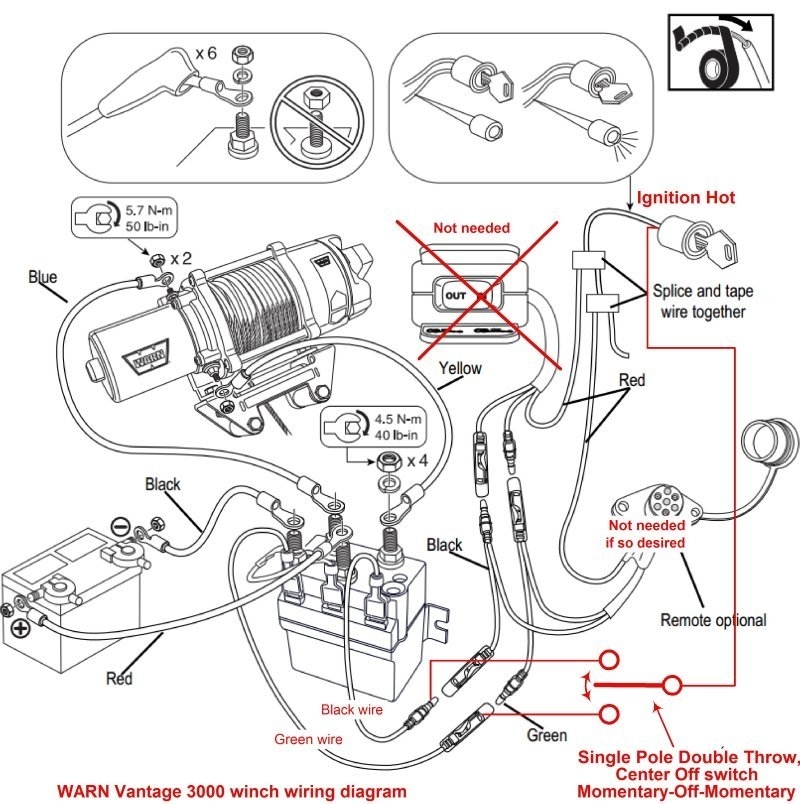
Now, since you have disconnected the winch motor from the battery. Next, you need a jumper wire. A 5-6” inch jumper wire will be perfect for this job. Connect the jumper wire from point A to F1. And then engage the battery through point F2. You will notice that the winch motor starts to rotate. It is rotating in one direction, to check if it can rotate in another direction, follow the next step.
This step is similar to step 4, but the connections of the jumper wire are opposite. Now, you have to connect the jumper wire from point A to F2. And power it by the battery through point F1. The motor should now rotate in an opposite direction.
As I mentioned at the start that the purpose of wiring a winch without the solenoid is to troubleshoot. If your winch is not working or over-heating, you can test it by directly running the winch motor.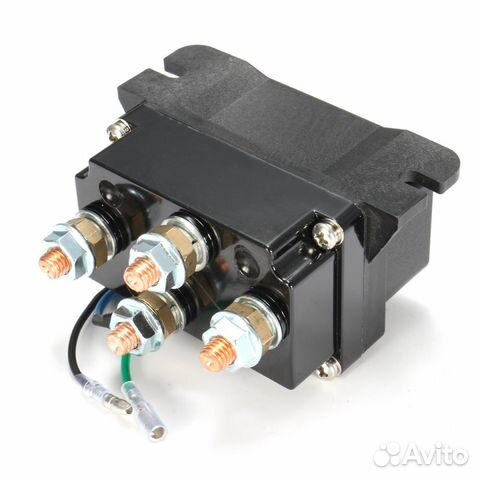 The steps I discussed are the means to follow while investigating a harmed winch solenoid to decide whether you really want a winch solenoid substitution.
The steps I discussed are the means to follow while investigating a harmed winch solenoid to decide whether you really want a winch solenoid substitution.
If the winch motor works perfectly fine, then that means the problem may be with the solenoid or the wiring connections. Have a look at the wiring connections, and check if they are as explained in the user manual.
To test a 12 volt solenoid in a winch; first turn off the winch. Then, connect the two terminals of the voltmeter with the solenoid, if the reading is less than 12V that means the solenoid needs a replacement.
While you are working with a winch, you need to follow some precautions.
Keep your working space clean: Clean the space you are working on. Ensure that there isn’t any stuff that can make you excursion or slip. Clean your workspace and ensure there are no pools of water around you, this is a risk while dealing with electric wirings.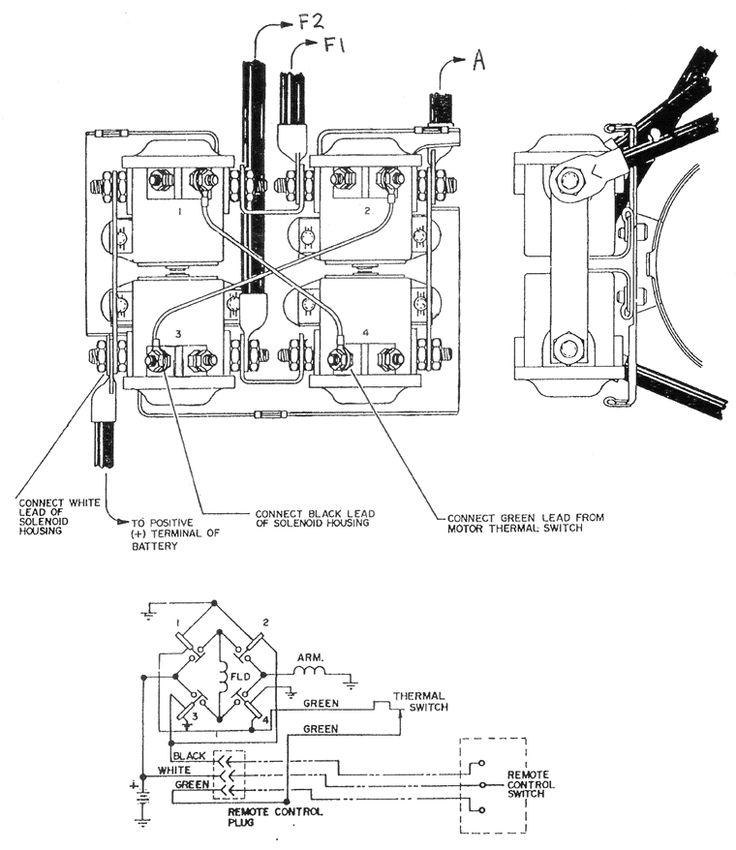
Work very Carefully: Always work carefully, particularly while you are dealing with electrical connections. Keep in mind that winches are designed to pull large pounds of force; be cautious.
Use Gloves: Winches are made to pull or lift weighty items, and these things can gauge a huge number of pounds. In addition, the winch link might have metal splinters on them, so make sure to wear gloves to safeguard yourself from setbacks. Since you will work with electrical wirings too, so try to shield your hands from power.
Avoid Loose Clothing: Avoid wearing any adornments, watches, or any loose clothing as they can get caught in the winch’s moving parts.
Now, I have explained how a winch can be wired without a solenoid. But the question is, what is the purpose of using the solenoid in a winch, do we really need it?
Solenoids are electromagnetic switches.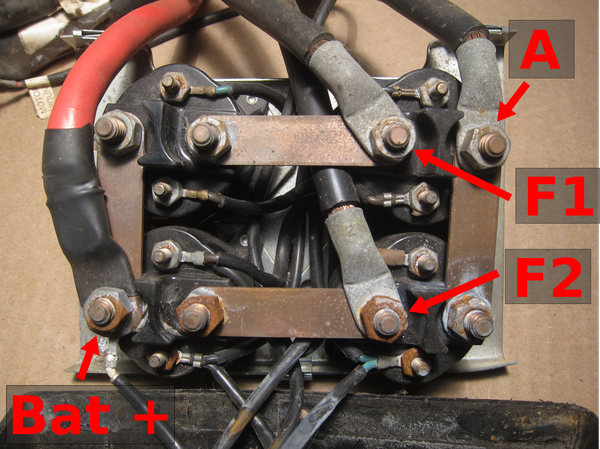 On a vehicle, mounted with a winch, the solenoid is utilized to operate the winch motor. It is made to deliver the appropriate current without causing damage to the winch motor or switch.
On a vehicle, mounted with a winch, the solenoid is utilized to operate the winch motor. It is made to deliver the appropriate current without causing damage to the winch motor or switch.
A winch solenoid’s primary function is to relieve stress on the winch switch and prevent it from overheating. As a result, the solenoid is critical to the winch motor’s operation.
Learn More: How Powerful Winch Do You Really Need?
What do you think, do we really need a solenoid on the winch?
Yes, you really need a solenoid on a winch to assist with safeguarding the winch engine. Replacing a solenoid is much cheaper compared to replacing a motor. Though that winch motor can run without a solenoid, it needs extra caution.
Here are some of the best winches for car trailers with multiple solenoid mounting options that can prove to be really helpful in certain situations.
I hope you have learned how you can wire the winch without a solenoid, in case your winch motor is not working properly.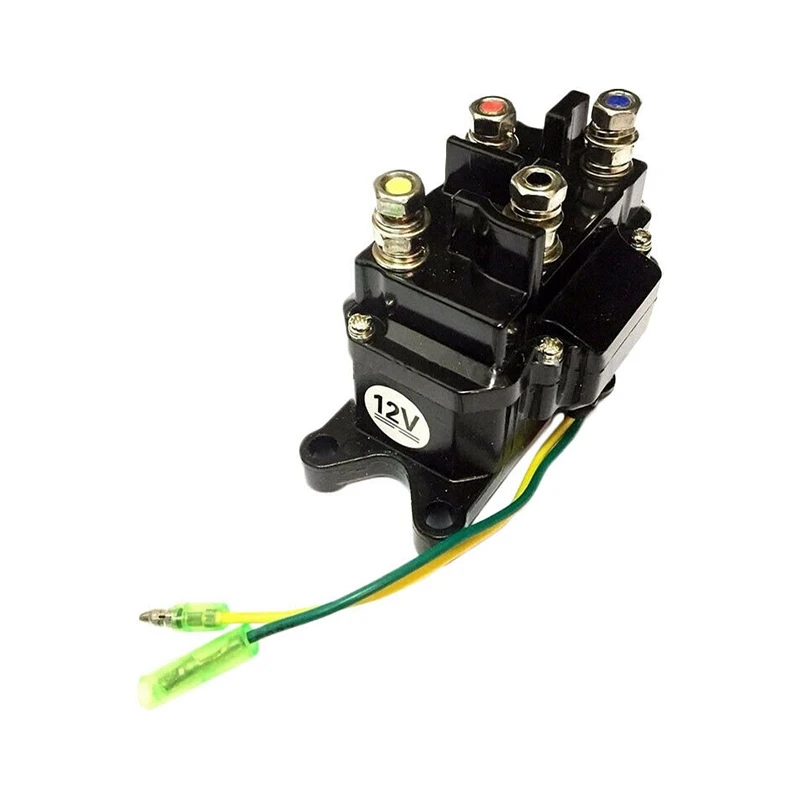
Do remember to follow all the safety precautions. If you are not good at these things, you should take the help of an expert technician.
(Visited 3,570 times, 11 visits today)
If you are used to using an ATV, as they say "to the fullest", if you cannot imagine existence without measuring deep puddles and swamps, overcoming hilly terrain, and the thirst for extreme sports was born faster than you, then installing a good powerful winch is just what you need. what you need.
Installing a winch on an ATV is a simple process, but responsible and requires certain skills and care.
You can read an article on the correct use of a winch on an ATV here.
Winch platform.
Suppose you have already decided on the choice of a winch, then you should pay attention to the mounting of the platform. You can make the platform yourself or purchase it specifically for your ATV model (although you will most likely still have to grind and finish).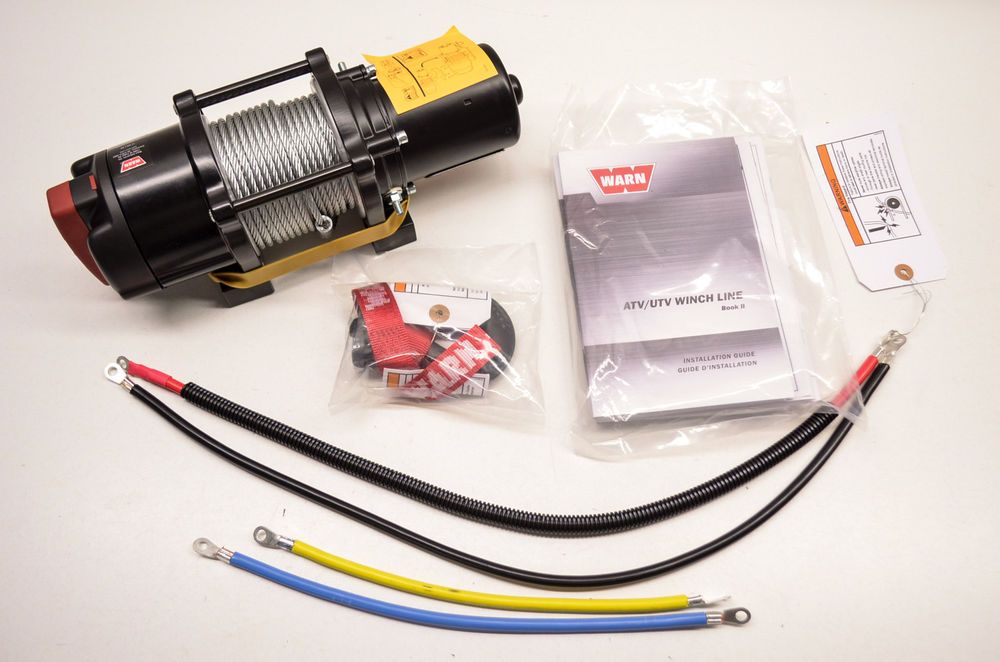
It must be said that the attachment of the winch platform to the frame must be reliable and thoughtful, because all the weight under load will fall on this particular unit.
Winch wiring harness.
For easy cable routing, we recommend that you remove the ATV plastic, this will make your job much easier.
When laying wires, try to keep the power cables as short as possible, this will avoid current loss when the winch is running. If the wires are too long, they should be shortened after laying near the battery and put new terminals in place of the cut.
Cables should be tucked into the corrugation to avoid short circuits and direct contact with the ATV frame.
Attention! Wiring should be carried out with the battery terminals disconnected.
Wiring diagrams for the winch and control panels.
Connection for control unit, winch and battery.
Scheme for connecting the winch console to the solenoid.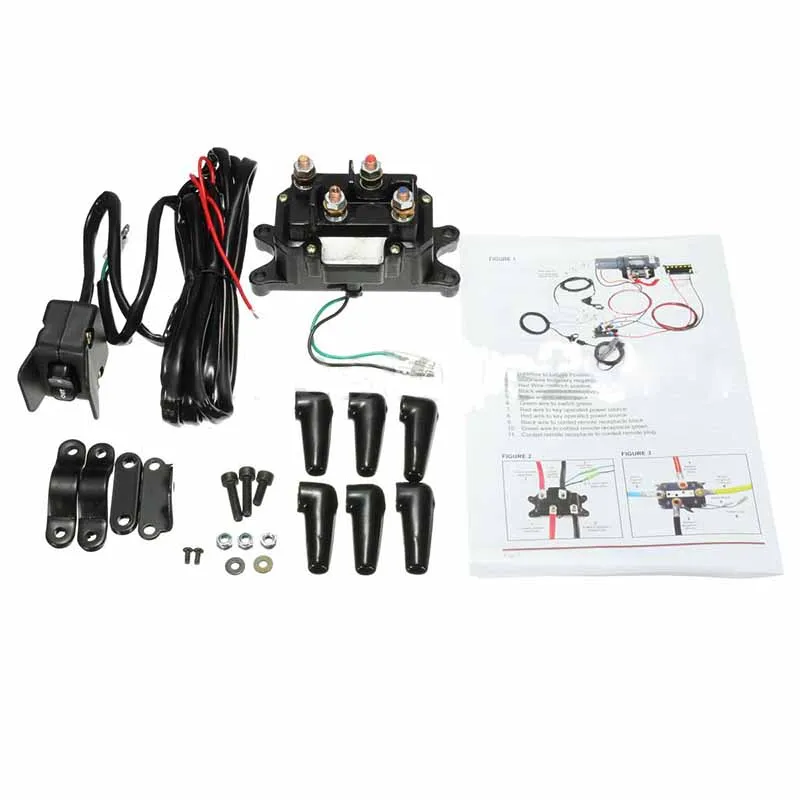
Winch radio control connections to dual solenoids.
After installing the winch and wiring, check the winch and control panels for proper operation.
A video that shows in detail the entire process of installing a winch on an ATV:
you can always ask a question or make a suggestion in the comments. I wish you a successful installation of the winch on your ATV, and fewer situations in which you have to use it.
"...
Arch extensions for a flat..."
Number of guests with me: Sign up.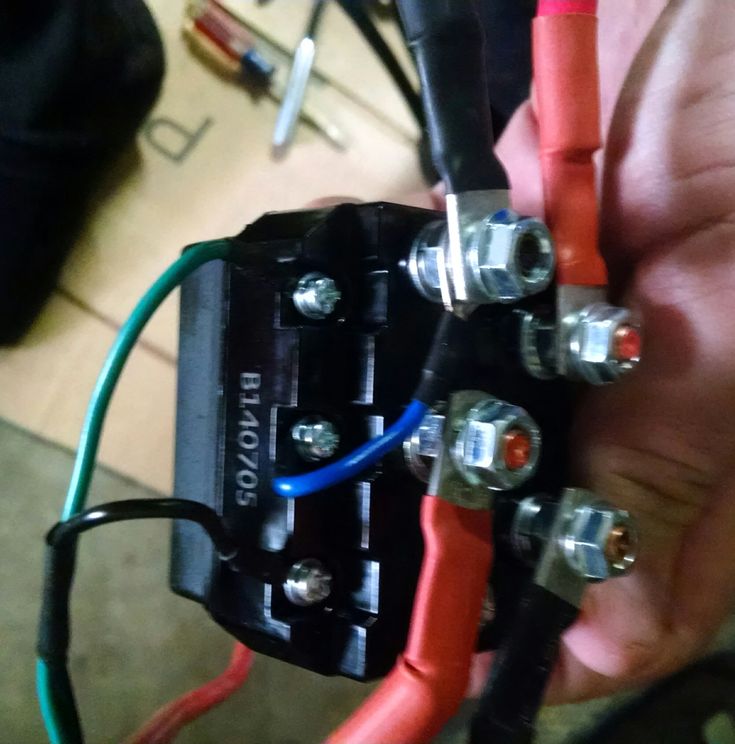 About the club. Home Forum Exchange of experience strictly no flooding Let's talk about 3-port solenoids again Displaying 1 to 12 of
About the club. Home Forum Exchange of experience strictly no flooding Let's talk about 3-port solenoids again Displaying 1 to 12 of
Search for data on your request:
schemes, reference books, Datashites:
price list, prices:
discussions, articles, manuals:
Content:
- Alpina-Service: repair of Subaru and BMW in Moscow
- Registration for event
- Bi-lens solenoid connection
- Help connect solenoid
- Loop inductance
- Solenoids (Part 1).
Types and device. Operation and features of
- Magnetic solenoid principle of operation and control methods
WATCH RELATED VIDEO: Wiring an Irrigation Solenoid Valve
Forum Member List Mark Forums Read Help Advanced Search. Page 3 of 6 First 1 2 3 4 Last To Page: Displaying 21 to 30 of Subject: Connecting Solenoids to PLC Relay Outputs Subject Options Printable Version Email…. Woolfy View Profile Forum Posts Private Message View Articles. Posted by werg. I hope you don't need to shunt the relay coil with a diode.
Vold View Profile View Forum Posts Private Message View Articles. A message from Wolfy. It remains to decide on the diode for the solenoid 20 W.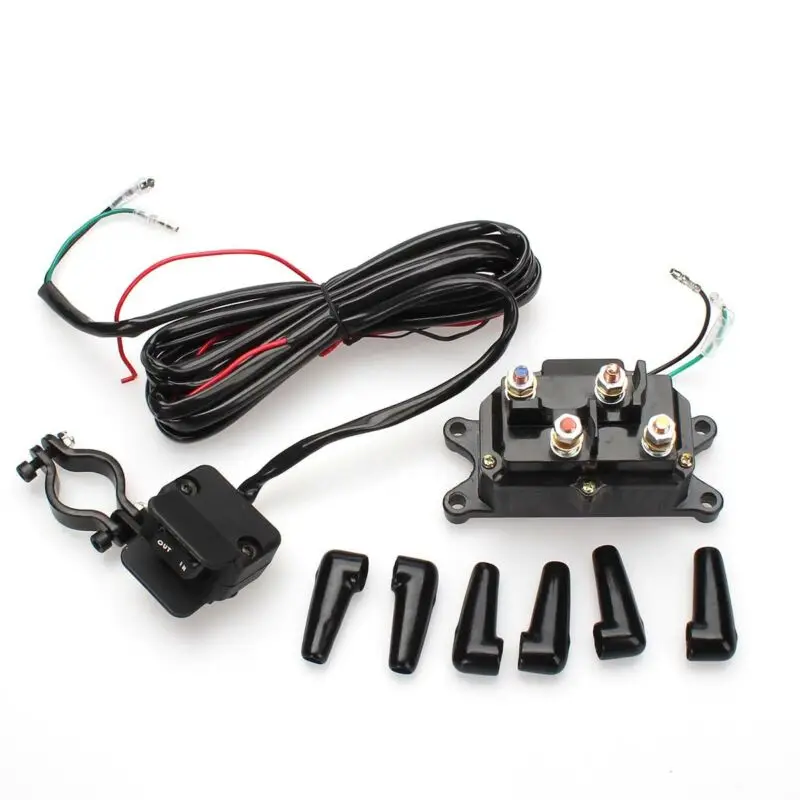 I previously wrote that 40, but there is an option with 20 and it seems to be better. Last edited by wold; Share your experience, who connected the solenoids to the PLC outputs? Interested in the question of the reliability of outputs reverse voltage and peak currents Solenoid supply 24 V, power 40 W. Are reverse diodes needed?
I previously wrote that 40, but there is an option with 20 and it seems to be better. Last edited by wold; Share your experience, who connected the solenoids to the PLC outputs? Interested in the question of the reliability of outputs reverse voltage and peak currents Solenoid supply 24 V, power 40 W. Are reverse diodes needed?
Is it generally a good idea to connect directly to the PLC relay outputs? Thank you, what is the calculation principle for diodes? What is taken into account when calculating the resource of the relay? I understand that basically the contact group fails? Where did you see it mounted on a DIN rail? Message from Alexei Gennadievich. Use 1.5KE30CA bi-directional protection diode as protection. Cuts down overvoltage impulses at the level of 30v.
As a bonus, we get a faster shutdown of electromagnets than when using rectifier or pulse diodes. The wear of any relay is divided into mechanical and electrical.
Mechanical is usually measured in millions of operations. Electric strongly depends on the nature of the load: active or inductive. At equal load currents, an inductive load causes wear of the relay contact group several times faster than an active one. The mechanism of operation: energy is stored in the electromagnet in the form of a magnetic field, at the moment of shutdown it "merges" in the form of a self-induction pulse through an arc gap between the contacts or through a protective diode.
Electric strongly depends on the nature of the load: active or inductive. At equal load currents, an inductive load causes wear of the relay contact group several times faster than an active one. The mechanism of operation: energy is stored in the electromagnet in the form of a magnetic field, at the moment of shutdown it "merges" in the form of a self-induction pulse through an arc gap between the contacts or through a protective diode.
Since the arc between the contacts burns longer than with a resistive load, more burnout of the contacts occurs. I always put intermediate relays - cheap and reliable!
What power do I need these diodes for? I looked in the chip and dip for W. A ARIES or google weakly. There are hundreds of them for every taste. I sometimes fall into a trance from children's questions. Last To page:. Replies: 6 Last Post: Replies: 8 Last Post: Relay Output Switching Coil to B by Why? Replies: 3 Last Post: Replies: 1 Last Post: Replies: 4 Last Post: Smily Incl.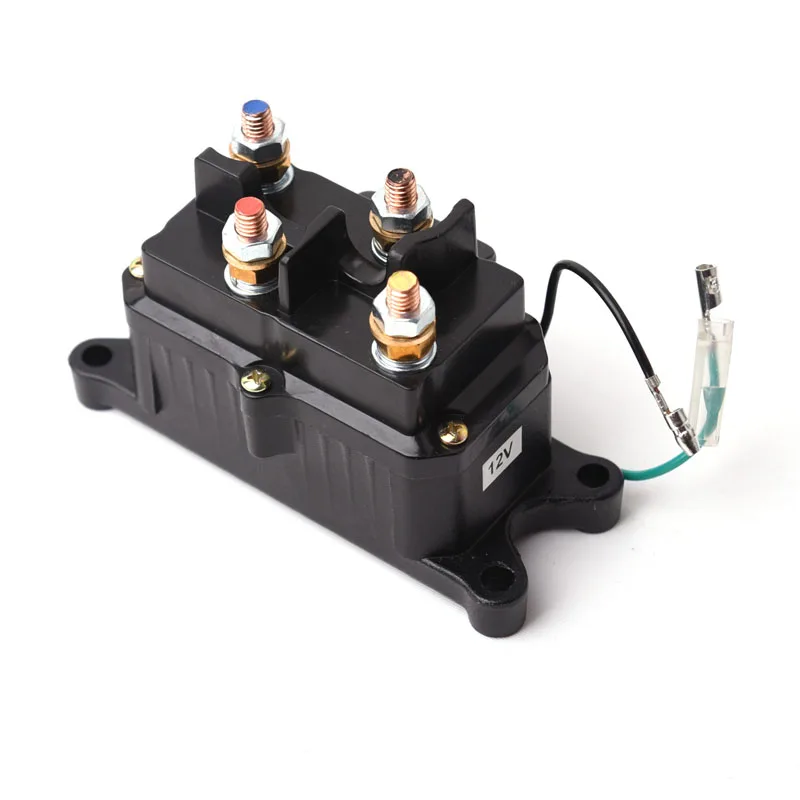
HTML code Off Current time:
View Full Version : eliwell st Connecting the solenoid to the evacuation valve of the circuit. Mounted in ancient times. An unknown organization. Between the kkb and the vent installation there is no expansion valve, and of course there is no filter with a solenoid. Such things.
But because two wires come out of the solenoid, then I throw the remaining wire (blue) onto the body. I understand this wiring diagram.
Skip to content. You have disabled JavaScript. Some functions may not work. Please enable JavaScript to access all features. Sent on December 30 - Only if you put the button, then connect it a little differently - through minus 30, parallel to the signaling channel. Sent 31 December -
In practice, solenoids are called some actuators, the electromechanical principle of operation, for example, a starter solenoid relay or an automatic transmission solenoid valve.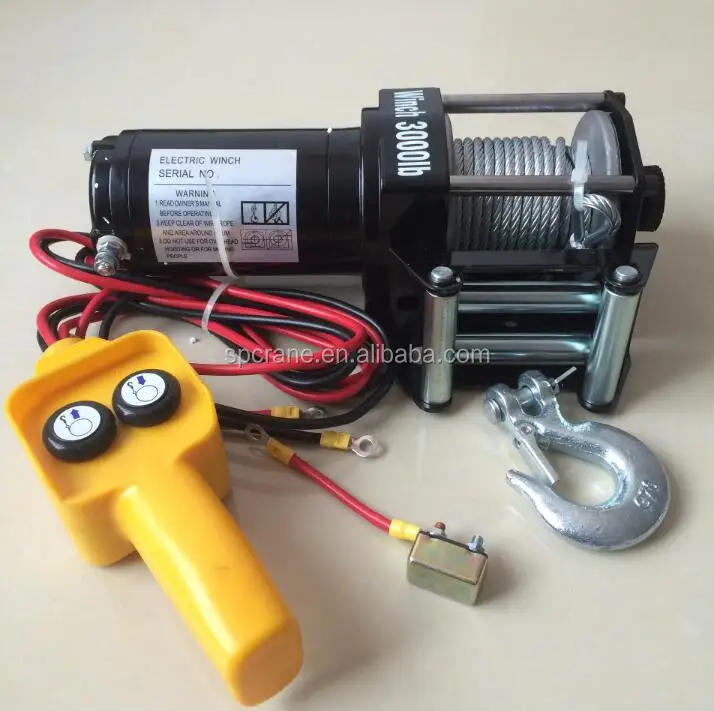 The role of the retractable part of the solenoid device is a ferromagnetic core and the coil itself has a magnetic circuit. If you place a magnetic rod inside this field, then it can move back and forth inside the coil. The force of the solenoid characterizes the force which the device is able to retract or push the rod. The magnitude of this force is directly proportional to the number of coil windings and the current applied to the control circuit.
The role of the retractable part of the solenoid device is a ferromagnetic core and the coil itself has a magnetic circuit. If you place a magnetic rod inside this field, then it can move back and forth inside the coil. The force of the solenoid characterizes the force which the device is able to retract or push the rod. The magnitude of this force is directly proportional to the number of coil windings and the current applied to the control circuit.
This article is about solenoids.
The solenoid is a cylindrical coil whose length is much greater than its diameter. That is, the solenoid is a coil, shaped like a pipe. Solenoids are an ordinary inductor, inside which, when voltage is applied, a magnetic field arises. This field draws a magnetic core into the coil, which performs mechanical work, such as opening a lock or changing the position of a valve. The solenoid is triggered when a voltage of 12 volts appears on its windings, so connect it to the control board through a power switch or relay.
The solenoid from the factory is Grant Norm .. You press the key on the alarm key fob and the trunk is open .. You can connect it to the button that is placed to the right of the steering wheel under the APS indicator Next, you need to build according to the electronic circuit. IMHO: a solenoid with a large pin steers on the trunk of a sedan, you can see the brand and the alarm connection diagram.
eliwell st on KKB Ned NCA/WP 27 S/K. - 2 pcs. Mounted in ancient times. An unknown organization. Between kkb and vent.
Forum User list All topics read Help Advanced search. Page 3 of 6 First 1 2 3 4 Last To Page: Displaying 21 to 30 of Subject: Connecting Solenoids to PLC Relay Outputs
Electrical solenoids operate on the same electromagnetic principles as DC motors, however solenoids can use magnetic energy to push or pull something instead of turning it.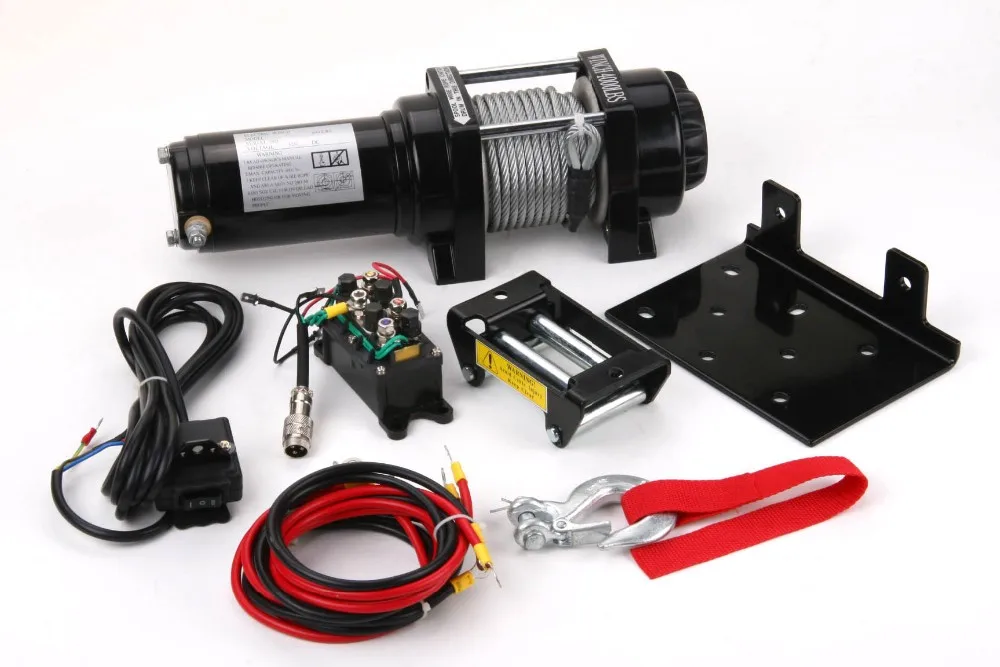 Solenoids can be found in paintball guns, pinball machines, printers, valves, and even cars. A solenoid is a coil that, when energized, creates a controlled magnetic field directed towards its center. If you place a magnetic rod inside this field, this rod can move back and forth inside the coil. Controlling the solenoid is quite simple, especially if you connect an Arduino, as in this tutorial. The strength of the solenoid, the force with which it can retract the rod, is directly proportional to the number of coil windings and the applied current.
Solenoids can be found in paintball guns, pinball machines, printers, valves, and even cars. A solenoid is a coil that, when energized, creates a controlled magnetic field directed towards its center. If you place a magnetic rod inside this field, this rod can move back and forth inside the coil. Controlling the solenoid is quite simple, especially if you connect an Arduino, as in this tutorial. The strength of the solenoid, the force with which it can retract the rod, is directly proportional to the number of coil windings and the applied current.
Users browsing this forum: Google [Bot] and guests: 1.
Continue Shopping Checkout. Continue Go to bookmarks. Continue Go to product comparison. Winches Manual winches Electric winches Hydraulic winches Electric telphers Car winches Winches for ATV Winches for tow trucks Portable winches. Winch drums Winch bushings Mass switches Winch motors Control kits Control box housings Engine covers Gearbox covers Connecting couplings Control panels Connection sockets Transmission reducers Motor rotors Solenoids for winches Motor beds Gearbox beds Winch stators Winch brake Brush assemblies.